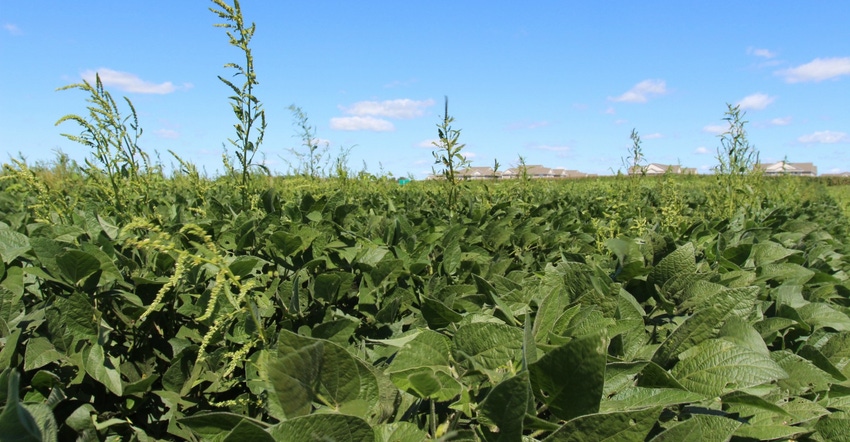January 2, 2020

One of the topics being discussed at our annual Crop Advantage meetings across Iowa in January is weed management for 2020 and beyond. Increased occurrence of herbicide-resistant weed populations is a major challenge for corn and soybean growers across Iowa and the Midwest. Among these weed species, common waterhemp is the most widespread in Iowa.
Iowa waterhemp populations are now known to resist five different herbicide groups. Those include ALS inhibitors (Group 2), photosystem II inhibitors (Group 5), PPO inhibitors (Group 14), HPPD inhibitors (Group 27) and EPSP synthase inhibitor glyphosate (Group 9). Other states have reported waterhemp with resistance to synthetic auxins (Group 4) and long-chain fatty acid inhibitors (Group 15).
With the evolution of weed resistance to these major herbicide groups used in corn and soybeans, herbicide options are increasingly limited with no new herbicide site-of-action products introduced to the market in the past three decades.
Multi-tactic approaches
Iowa State University weed management specialists Bob Hartzler and Prashant Jha are speaking at the winter meetings. They explain how weed management in 2020 and beyond will be focused on developing multi-tactic approaches to control weeds in corn and soybeans. These strategies include managing herbicides more effectively to control target weeds and using emerging and future technologies to better manage weeds. For example, using cover crops to help control weeds, managing weed seeds during soybean harvest and using site-specific resistance management. You must consider how you would manage waterhemp if herbicides only provided partial control and what additional control tactics are practical on your farm.
Further information will cover the following:
Herbicide product update. Results from ISU’s 2019 herbicide evaluation program provide updates on new products and weed control performance of herbicides labeled for use in Iowa. Herbicide recommendations are developed by ISU to manage troublesome grass and broadleaf weeds, with a focus on preemergence and postemergence programs for controlling herbicide-resistant waterhemp.
Cover crops for weed control. Future ISU research will focus on integrating cover crops in soybean production to help manage herbicide-resistant waterhemp. It’s critical to understand how ecologically based weed management practices like this can potentially reduce reliance on herbicides and delay evolution of herbicide resistance in corn-soybean rotations.
Harvest weed seed control. Greater attention is needed to manage late-season weed escapes that can potentially contribute to replenishing the herbicide-resistant weed seed bank in the soil. The relatively new practice of managing weed seeds during crop harvest is being discussed at our winter ISU Extension meetings. Several approaches have been adopted in Australia, including lining chaff behind combines using cage mills in the combine to crush weed seeds. At least one harvest weed seed control method will be tested in Iowa soybean production in 2020.
Hyperspectral imaging. Looking to the future, a project funded by the Iowa Soybean Research Center and the Iowa Soybean Association aims to develop an innovative, remote-scouting IPM tool for early detection and differentiation of glyphosate and multiple-herbicide-resistant waterhemp, giant ragweed and marestail from susceptible weeds in corn and soybean fields. Machine learning algorithms will be used to develop weed maps to differentiate weeds in the crop and to identify herbicide weed resistant biotypes in the field using UAV (drone) imaging.
To help plan your weed control strategy for 2020, refer to the Herbicide Guide for Iowa Corn and Soybean Production, ISU publication WC 94 Revised.
Anderson is the ISU Extension field agronomist for central Iowa. Contact her at [email protected].
About the Author(s)
You May Also Like






